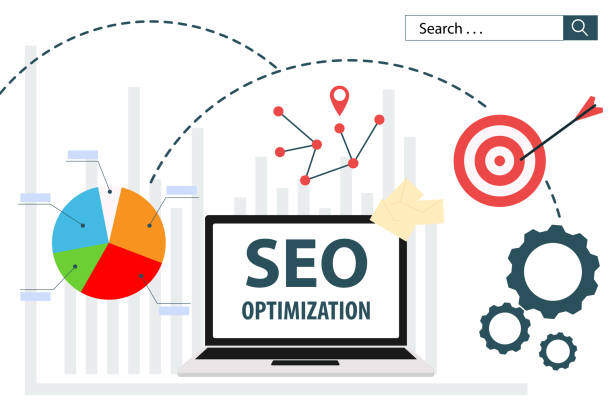Optimizing Page Speed for Better SEO Rankings
In the computerized period, where capacities to focus are contracting and clients request moment delight, the speed at which a site load assumes an urgent part in client experience and, thus, web crawler rankings. Google, the main web crawler, has long considered page speed as a significant factor in determining a site’s position in query items. We will look into the meaning of Optimizing Page Speed for Better SEO Rankings for improving it to upgrade, generally speaking, site execution.

Understanding the Significance of Optimizing Page Speed for Better SEO Rankings
The Effect on Client Experience:
Page speed is straightforwardly connected to client fulfillment. A sluggish stacking site disappoints guests, prompting higher skip rates and decreased commitment. Google perceives the significance of client experience and rewards sites that focus on speed with higher rankings.
Versatile First Ordering:
With the rising utilization of cell phones, Google has moved towards portable first ordering. This implies that page speed on cell phones is currently a basic element for website design enhancement. Sites enhanced for versatile stacking speeds are bound to rank higher in list items.
Center Web Vitals:
Google has presented Center Web Vitals as a bunch of measurements that survey client experience on a site. Three critical parts—Biggest Contentful Paint (LCP), First Info Deferral (FID), and Combined Format Shift (CLS) — center around stacking execution, intuitiveness, and visual soundness separately. Further developing these measurements emphatically impacts web optimization.
These are all pivotal factors in Optimizing Page Speed for Better SEO Rankings.
Surveying Current Page Speed Execution
Instruments for Estimation:
Before setting out on any enhancement endeavors, it’s fundamental to assess your site’s ongoing page speed. Instruments like Google PageSpeed Bits of Knowledge, GTmetrix, and Beacon give point-by-point experiences in different execution measurements. Understanding the current bottlenecks is pivotal for designated enhancements.
Distinguishing Basic Issues:
Normal issues influencing page speed incorporate enormous picture documents, render-obstructing scripts, inordinate HTTP demands, and slow server reaction times. A careful investigation will assist with pinpointing these issues and laying the foundation for successful enhancement methodologies.
Procedures for Improving Page Speed
Picture Enhancement: Huge picture documents are a significant supporter of slow-stacking sites. Use picture-pressure procedures without compromising quality. Consider lethargic stacking to concede the stacking of pictures until they are apparent to the client, diminishing starting page load times.
Limiting HTTP Demands:
Every component on a website page, whether it be pictures, templates, or scripts, adds to the all-out number of HTTP demands. Limit these solicitations by joining CSS and JavaScript records, using picture sprites, and decreasing pointless components on the page.
Program Reserving:
Influence program reserved to store static records on clients’ gadgets. This guarantees that returning guests don’t have to download similar assets over and over again, altogether further developing burden times for resulting visits.
Pressure Strategies:
Empower server-side pressure, like Gzip or Brotli, to diminish the size of documents communicated throughout the organization. Packed documents require less data transfer capacity, bringing about quicker stacking times for clients.

Substance Conveyance Organization (CDN) Incorporation:
Circulate your site’s static resources across numerous servers decisively positioned all over the planet, utilizing a substance conveyance organization (CDN). This lessens dormancy and speeds up happy conveyance, especially for clients in various geographic areas.
Server Reaction Time Improvement:
A sluggish server reaction time can generally frustrate page speed. Enhance your server setup, pick dependable facilitating, and consider redesigning your facilitating plan to guarantee quick reaction times.
Dispensing with Render-Hindering Contents:
JavaScript and CSS documents that forestall the delivery of a page until they are completely stacked are viewed as render-impeding. Improve these records, concede superfluous scripts, and use offbeat stacking to upgrade page delivery speed.
Persistent Observation and Iterative Improvement
Normal Execution Reviews:
Page speed enhancement is a continuous interaction. Consistently review your site’s presentation utilizing instruments like Google PageSpeed Bits of knowledge and return to the systems framed above to resolve any new issues that might emerge.
A/B Testing for Execution:
Carry out A/B testing to evaluate the effect of changes on page speed and client commitment. By contrasting various adaptations of your site, you can distinguish the best factor of Optimizing Page Speed for Better SEO Rankings.
Conclusions about Optimizing Page Speed for Better SEO Rankings
In the cutthroat scene of online permeability, advancing page speed isn’t just about gathering web search tool prerequisites; it’s tied in with conveying an uncommon client experience. A quick-stacking site further develops website optimization rankings as well as improves client fulfillment, commitment, and change rates.
By understanding the meaning of page speed, recognizing execution bottlenecks, and carrying out designated improvement procedures, website admins can create a consistent web-based experience that resonates with the two clients and web search tools. Keep in mind that the excursion towards ideal page speed is constant, requiring carefulness, transformation, and a guarantee of a quick and proficient computerized climate for your crowd. This is all about Optimizing Page Speed for Better SEO Rankings.

FAQs about Optimizing Page Speed for Better SEO Rankings
Why is it important to Optimizing Page Speed for Better SEO Rankings?
Page speed is pivotal for website optimization since it directly influences the client experience. Web crawlers, especially Google, focus on sites that heap rapidly as they add to a positive client experience, prompting higher rankings. Slow-stacking pages frequently bring about higher skip rates, adversely influencing website design enhancement.
How does page speed truly influence versatile website optimization?
Versatile Website design enhancement is vigorously impacted by page speed because of the rising utilization of cell phones for web perusing. Google’s versatile first ordering implies that a site’s portable variant is viewed as the essential rendition for ordering and positioning. Versatile, upgraded, quick-stacking pages are bound to rank higher in portable query items.
What are Center Web Vitals, and how would they influence Web optimization?
Center Web Vitals are a bunch of client-focused measurements acquired by Google to evaluate the general client experience on a site. These measurements incorporate Biggest Contentful Paint (LCP), First Information Postponement (FID), and Total Format Shift (CLS). Further developing Center Web Vitals emphatically impacts Web optimization rankings by focusing on factors like stacking execution, intelligence, and visual dependability.
How might I gauge my site’s ongoing page speed?
A few instruments are accessible for estimating page speed, including Google PageSpeed Experiences, GTmetrix, and Beacon. These devices give point-by-point investigations of different execution measurements, assisting you with grasping current bottlenecks and regions for development.
What are the normal issues influencing page speed?
Normal issues incorporate huge picture documents, render-obstructing scripts, over-the-top HTTP demands, slow server reaction times, and unoptimized CSS and JavaScript. Recognizing and resolving these issues is fundamental for powerful page speed enhancement.

